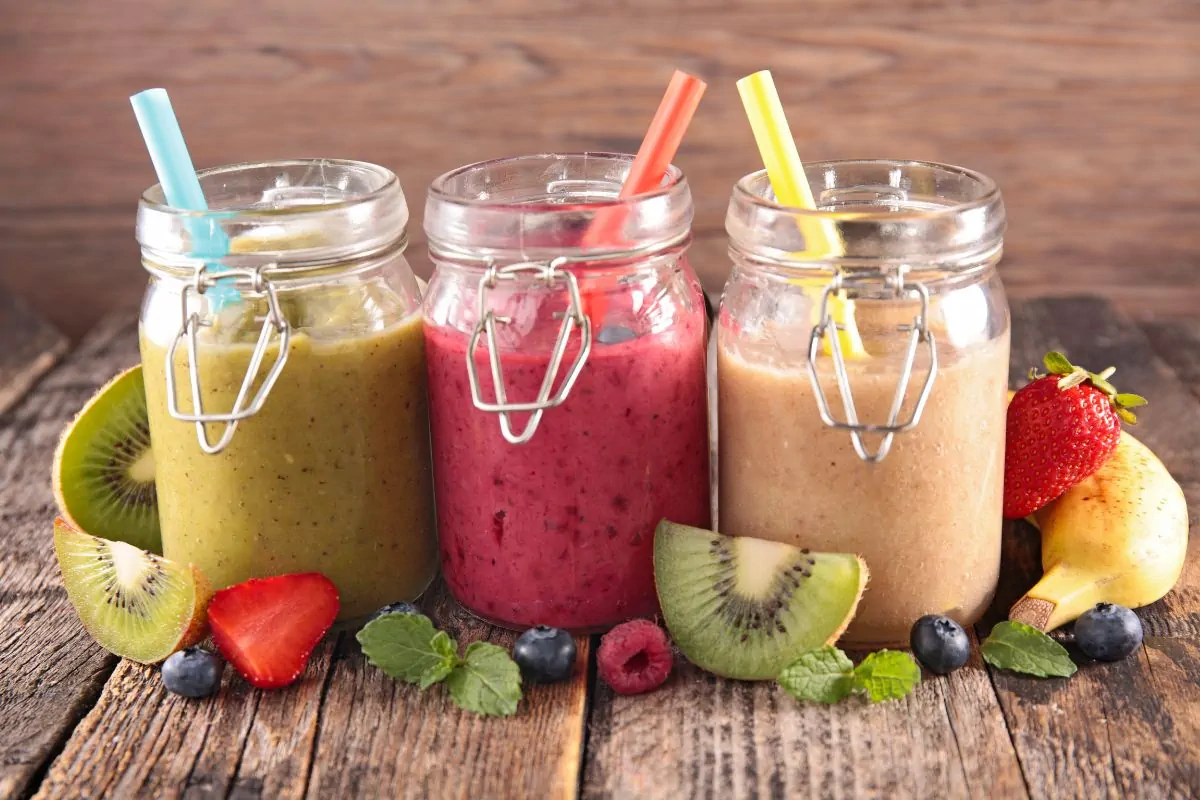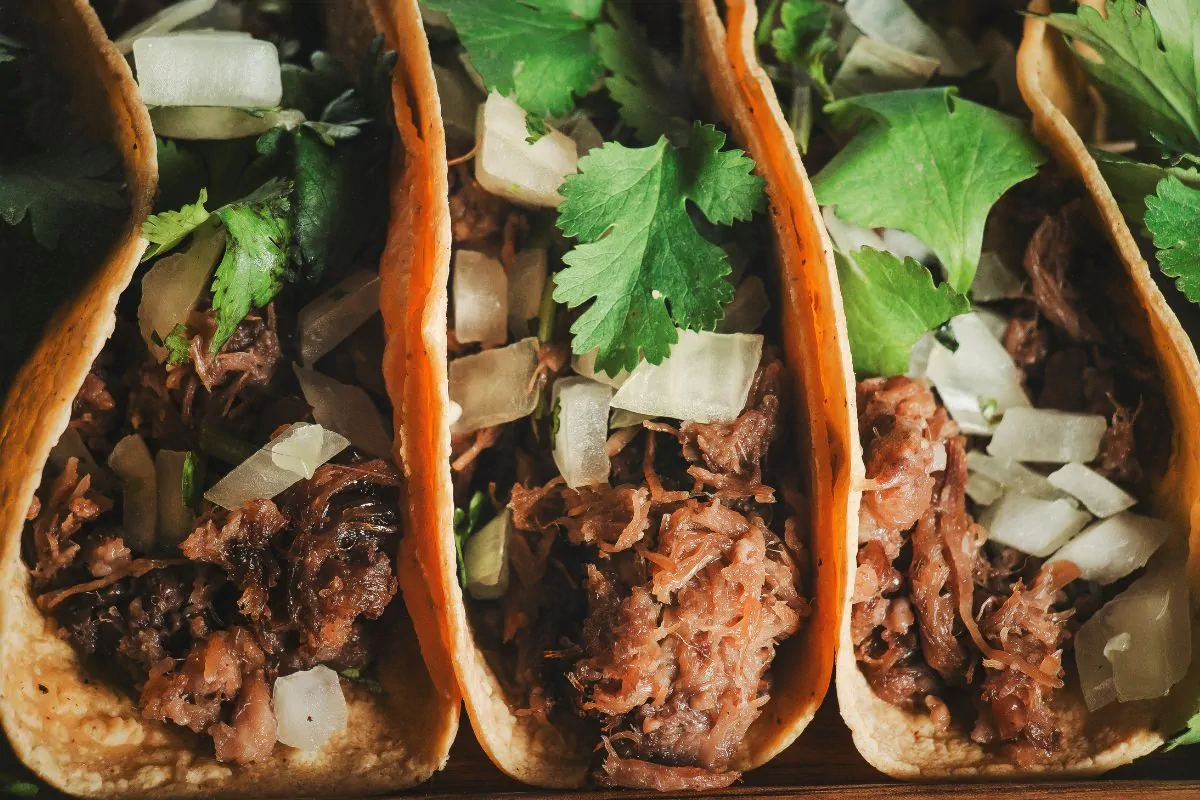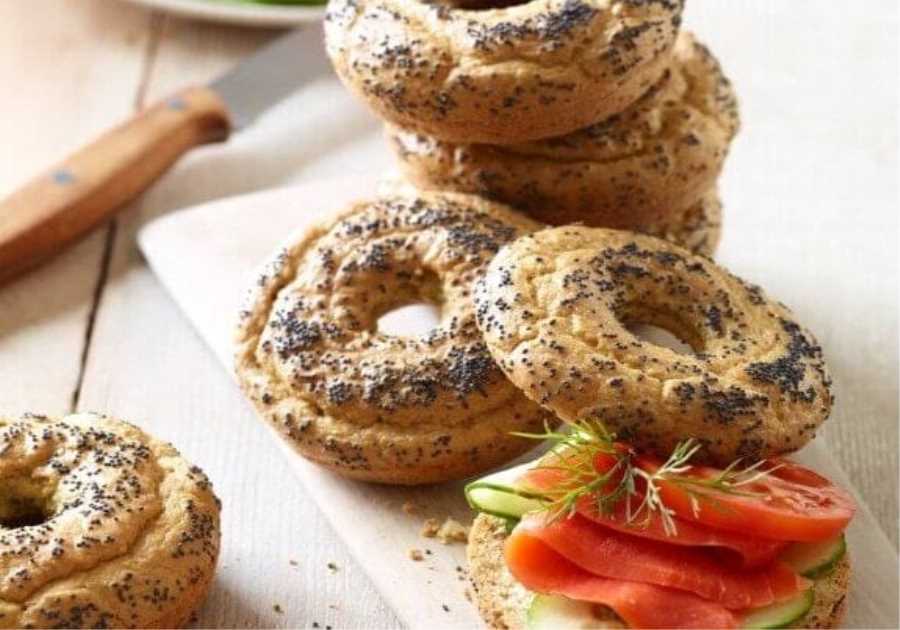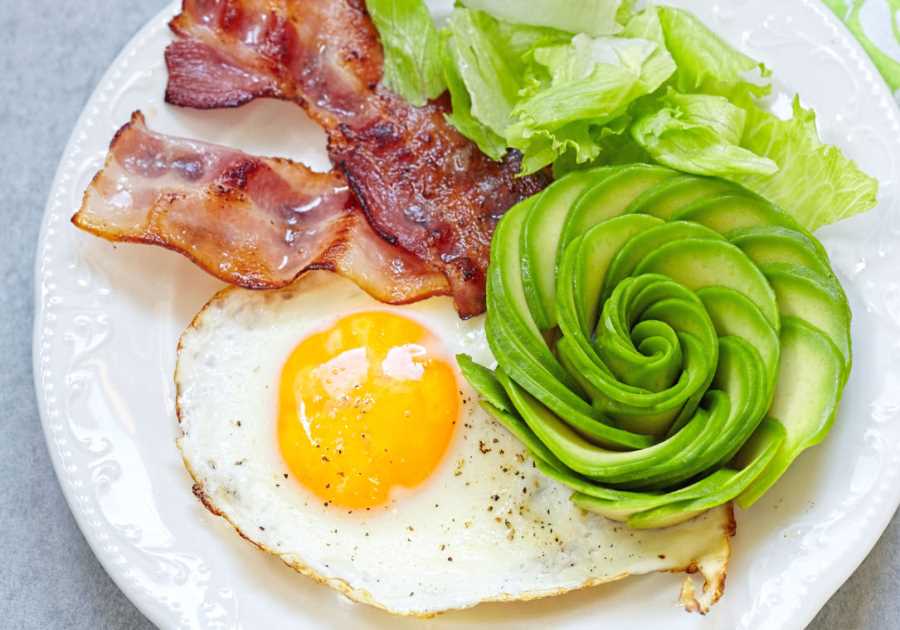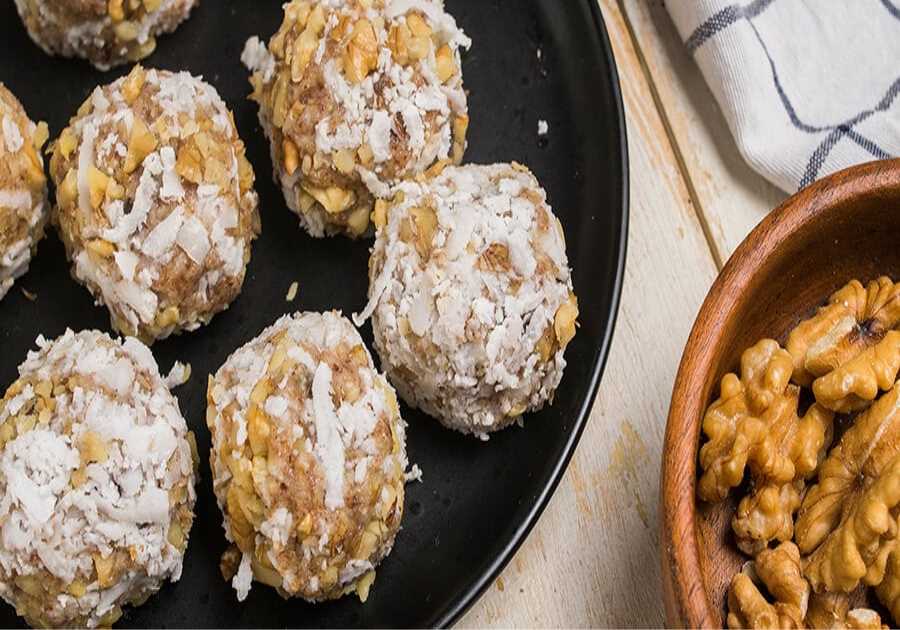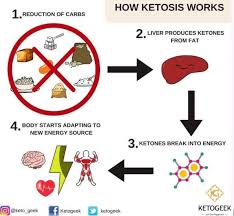
What is Metabolic Ketosis?
Ketosis is a metabolic state that occurs when the body produces ketone bodies from fat instead of glucose. This can occur when the body is deprived of carbohydrates, hence the term "keto," derived from "ketogenic." The ketones produced during ketosis provide the body's primary source of fuel, making it an appealing dietary choice for people looking to lose weight.
Ketosis occurs when the body shifts away from using carbohydrates as its main energy source and starts using fat and ketones instead. In order to enter this state, most people must reduce their carbohydrate intake to less than 50 grams per day and increase their consumption of healthy fats and proteins.
Ketone bodies are produced in the liver through a process known as fatty acid oxidation. These molecules are then transported to other cells throughout the body including those in muscles, brain, heart, and liver where they can be used for energy production. Burning ketones for fuel leads to a decrease in hunger hormones, making this diet very appealing for those looking to lose excess weight.
Ketosis also has several beneficial effects on health. Studies show that this diet helps lower blood sugar levels and improve insulin sensitivity which helps reduce your risk of diabetes and obesity. Additionally, it has been shown to reduce inflammation in your body while increasing levels of good cholesterol.
Due to these factors, many people use a low-carb or ketogenic diet as an effective weight loss tool—it has become increasingly popular in recent years due to its impressive results on physical transformation goals, such as improved muscle definition or composition or general health markers improvements.
Increased fat burning
During Ketosis, the liver produces ketones and sends them to your cells for energy. These metabolites have an important role in your health.
This metabolic state is not always permanent. However, it is helpful for people who need to lose weight. For this reason, a diet that emphasizes eating high-fat and low-carb foods can be a viable option. It's also a good idea to supplement the diet with an exogenous ketone supplement.
In addition to the ketogenic diet, intermittent fasting is another way to achieve ketosis. Intermittent fasting is similar to the ketogenic diet, but it does not involve fasting for days. Instead, you eat a limited amount of food on a regular basis.
Aside from reducing your calorie intake, intermittent fasting can have a number of other benefits. First, it will help you increase your metabolism, which will lead to faster weight loss. Additionally, it will reduce your hunger.
Weight loss via Ketosis
You can achieve ketosis through fasting or a very low carbohydrate diet. It can be a helpful tool for weight loss. A ketogenic diet is a high-fat, low-carbohydrate diet that promotes weight loss and improves metabolic health. It is a great option for individuals who are battling obesity or diabetes. However, it can lead to nutritional deficiencies.
The keto diet is based on a metabolic process, ketosis. When your blood glucose is low, your body will break down stored fat. This process also helps you burn your body fat for energy.
Ketosis is generally considered a safe and healthy metabolic process. But, research has yet to fully explore the long-term effects of constant ketosis.
While some people claim that ketosis can help you lose weight, it isn't a magic bullet. Moreover, it can have adverse side effects if you are not careful. For example, you might be at risk for osteopenia, an early precursor to osteoporosis.
Metabolic syndrome
Metabolic syndrome is a cluster of conditions associated with cardiovascular disease and diabetes. It also includes high blood pressure and abdominal obesity. However, the public health community has struggled to define this condition.
Ketosis is the metabolic process of breaking down fat for energy. The body's fat stores are then converted to ketones, which become the primary source of energy for the body. This is an important part of the body's ability to adapt to fasting.
Ketones can be dangerous if they build up in the blood. They can also be a sign of an illness such as diabetic ketoacidosis.
Ketosis is a very common condition in diabetics. When insulin levels are low, ketones are produced. Normally, the body uses glucose as its main source of energy. But, when the body doesn't have enough glucose, it breaks down fat instead.
In the liver, the breakdown of fat results in a product called oxaloacetate, which is metabolized by acetyl-CoA. Oxaloacetate is then condensed to produce citrate. These compounds are used as substrates in the TCA cycle.
Side effects
Ketosis can also cause side effects.
The first few days of ketosis can be a bit difficult to adjust to. Some people experience headaches and fatigue. These symptoms will pass within a few days. If you're concerned, it's best to consult your physician.
Another common ketosis side effect is bad breath. It's caused by chemicals released by your body during the ketogenic diet.
Headaches may also result from the fewer carbohydrates you're eating. In addition, you may be dehydrated, which can cause blood sugar problems. For these reasons, it's important to drink plenty of water.
There are a number of ways to avoid these negative symptoms. One option is to eat a balanced diet. You can also try ketosis supplements, which can provide you with balanced blood sugar levels.
A ketogenic diet can reduce seizures in epilepsy patients. It can also improve brain function. Other positives from the ketogenic diet include weight loss.
Frequently Asked Questions
Are There Any Keto Food Lists I Need?
How do you determine if you require a keto food plan? Your keto journey should include a food list. It is crucial to eat the right ketogenic foods that are high in fat and low on carbs. Finding the best fuel to achieve your goals can seem difficult with so many food options and recipes.
This can help you plan your meals more efficiently and give you enough variety. A keto food guide simplifies the process by giving you information about what you should be eating and some tips on how to prepare it. You can also use it as a reference guide to help you shop at the supermarket or at restaurants.
A balanced diet and healthy lifestyle can increase weight loss while maintaining wellness. This means that you should consume 12-15% protein, 15-30% of fat, and no more then 5% net carbs in order to reach the metabolic state called ketosis. It is important to choose meals that provide maximum nutrition with minimal carbs.
Finding a reliable keto food list that outlines nutritious options within these parameters can provide invaluable guidance in transitioning toward cleaner eating habits for improved well-being and purposeful living. This useful resource can help you take the first step towards your lifestyle goals.
Can I eat a vegan keto diet?
Knowing how the vegetarian keto lifestyle works will help you determine if it is possible to eat it. It's not so complicated as you might think. A vegetarian keto diet requires that you cut out animal products and find plant-based foods with high amounts of fats and low carbs.
When following a vegan keto diet, the most important thing is to monitor your macronutrients. This means weighing out how many carbohydrates, proteins and fats you eat each day. Fat should be increased and protein should be reduced. Your body should consume fewer carbohydrates to reach a optimal metabolic state known nutritional ketosis. This will result in your body burning fat for energy instead of glucose.
In addition to calculating macros and monitoring carbohydrate intake, you'll also need to focus on nutrient-dense whole food sources like nuts and seeds, avocados, leafy greens, and healthy unsaturated oils like olive oil and coconut oil. A vegan ketogenic diet should include vitamin B12 supplementation. This is because many people don't have enough of the essential vitamins and minerals they need.
Learn about plant-based options like tempeh and tofu, which are naturally low carbs but high in protein and heart-healthy oils. Then add some strategic supplementation sprinkled by macro counting to ensure you hit your nutrient ratios for success with a vegetarian keto diet.
Can you eat fruit while on keto
Curious about whether you can eat fruit on a keto diet? You can, but with caution.
It is important to reduce carbohydrate intake to maintain ketosis and to burn fat. Some fruits can still be part of a balanced keto diet.
Although low-carb fruits may be included in a keto meal plan they should only be consumed sparingly and in moderation. Carb contents vary greatly between individual fruits. For example, bananas have significantly higher carbs than avocados.
Sugar is found in fruits, which are broken down into glucose by the body for energy production. When you're trying to achieve nutritional ketisis, too much sugar can cause high blood sugar levels and lead to rapid weight loss. You need to be mindful of the serving sizes and avoid overindulging in sugary treats.
Choosing fresh fruit over processed or sugary snacks will provide essential vitamins, minerals, and fibre which help fuel our bodies without adding too many extra carbs associated with desserts or processed snacks like candy bars or pies.
When considering whether or not eating fruit on the keto diet is for you, always remember that fresh fruits are usually healthier than sugary treats - but only if you stick to one small portion at a time!
Statistics
- When following a ketogenic diet, carb content is between 5–10% of calories consumed, though looser versions of the diet exist (7Trusted Source (healthline.com)
- Around 35% of total calorie intake is probably the upper limit. (healthline.com)
- Recommended Keto diet includes: Keto sushi bites, olives, one or two hard-boiled or deviled eggs, keto-friendly snack bars, 90% dark chocolate, full-fat Greek yogurt mixed with nut butter and cocoa powder, bell peppers, and guacamole (healthline.com)
- One older study found that the ketogenic diet improved insulin sensitivity by a whopping 75% (25Trusted Source (healthline.com)
- Proteins should account for around 10–30% of energy needs, while carbs are usually restricted to 5%. (healthline.com)
External Links
ruled.me
fdc.nal.usda.gov
hsph.harvard.edu
ncbi.nlm.nih.gov
- The Ketogenic Diet - Evidence for Optimism, but High-Quality Research Required - PMC
- PMC: Low-Carb Ketogenic and Low-Carb Diets in Type 1 Diabetes and Type 2 Diabetes
How To
Ketogenic Diet - Exercise Incorporation
Reinvigorating your daily routine with exercise is essential for leading a healthy lifestyle. Ketogenic Dieting can help you achieve your goals by creating the optimal conditions to shed excess fat, build lean muscle, and other health benefits.
The goal is to make a lasting physical transformation. While one can begin exercising almost immediately, seeking professional guidance throughout the process is highly advised to ensure gradual progress and maximum results over time.
Apart from burning calories, it is important to create programs tailored to individual needs and other health concerns. Intense Strength training (HIIT), a popular way to boost metabolism and provide structure and shape to your body, is becoming more popular.
Another option is to train low-resistance, which allows one to rest well during cardio exercises, such as walking or running. However, this will still allow one to achieve significant results, without further injury, or fatigue.
Ketogenic dieting coupled with regular workouts allows you to gain greater control over what you eat and how you feel, providing a unified path for gaining physical strength, improved mental clarity, and all-around balance & wellness. These two elements create a system that allows for steady progress, with very few side effects, provided you follow the doctor's instructions. It gives you the ability to live more fully and enjoy life more!

